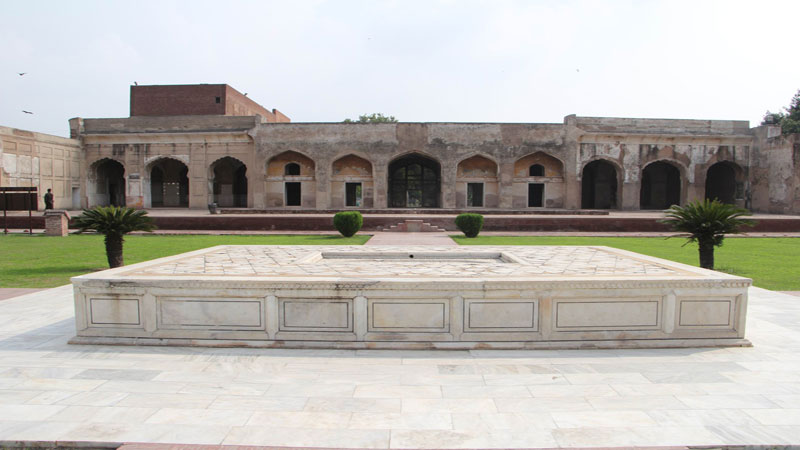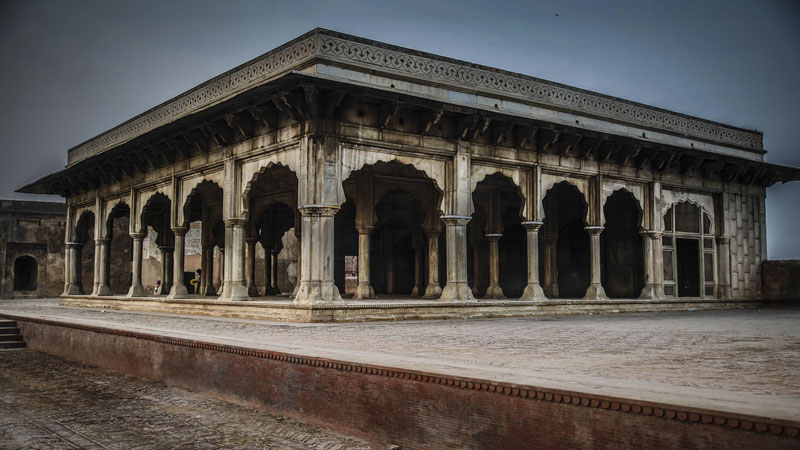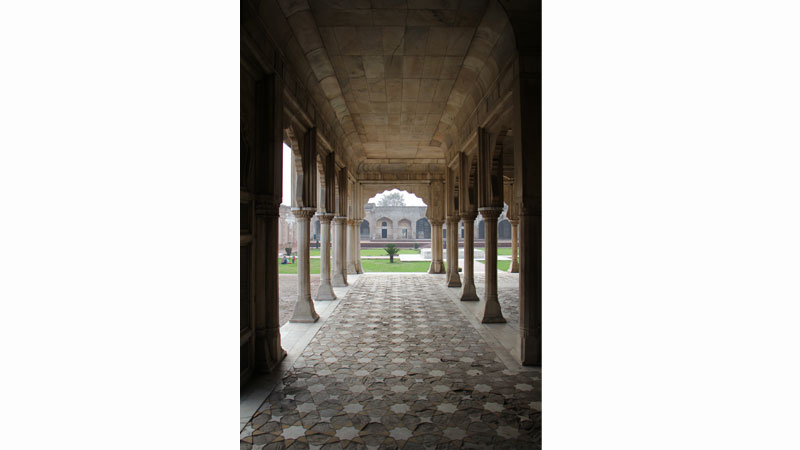 Lahore fort is a place where you explore something new every time you visit it. If I talk about myself, I am never tired or bored of visiting it again and again and somehow I admit that Lahore Fort is my love. We as Pakistanis are fortunate to have such monuments and we must visit them to understand the importance of this piece of land where we proudly live today. Lahore Fort is uniquely distributed into the ages it has gone through. You will see Mughal Emperor Akbar’s, Jahangir’s and Shah Jahan’s era constructions at different levels forming quadrangles or squares. I think Lahore fort is the only monument in Pakistan, which represents a complete history of Mughal architecture and the eras after it. Each site describes the era it was constructed in and by who through the material and styles used in its construction and that is one of the popular features of the fort. So let us come to another wonder inside the Lahore Fort which is not much popular and the visitors just pass by it, but if you want you can sit there to feel the trance of the bygone days and glory of the Mughal Empire and the love story hidden there.
Lahore fort is a place where you explore something new every time you visit it. If I talk about myself, I am never tired or bored of visiting it again and again and somehow I admit that Lahore Fort is my love. We as Pakistanis are fortunate to have such monuments and we must visit them to understand the importance of this piece of land where we proudly live today. Lahore Fort is uniquely distributed into the ages it has gone through. You will see Mughal Emperor Akbar’s, Jahangir’s and Shah Jahan’s era constructions at different levels forming quadrangles or squares. I think Lahore fort is the only monument in Pakistan, which represents a complete history of Mughal architecture and the eras after it. Each site describes the era it was constructed in and by who through the material and styles used in its construction and that is one of the popular features of the fort. So let us come to another wonder inside the Lahore Fort which is not much popular and the visitors just pass by it, but if you want you can sit there to feel the trance of the bygone days and glory of the Mughal Empire and the love story hidden there.
Shah Jahan’s Quadrangle is a work of stunning art, where you will see the constructions in white marble, which sparkles in the sunlight and glitters in the moonlight
Today, let us pass the Jahangir’s quadrangle and enter the Shah Jahan’s masterpiece which he added in the fort. This is a huge quadrangle but I guess not many of us know the history and stories about it. Shah Jahan’s Quadrangle or square is a work of stunning art where you will see the constructions in white marble which sparkles in the sunlight and glitters in the moonlight. Well, to start the journey here, on the east of Lal Burj in Shah Jahan’s quadrangle is the Diwan-e-Khas (Hall of Private Audience). This was constructed with a purpose to hold private gatherings and meetings. In this place the Emperor would attend the matters of the state, and courtiers and state guests were also received there with Mughal protocol and elegance. If we see the structure of this place, Diwan-e-Khas is square in plan and has a graceful arched pavilion built in pure white marble. One is awe stunned at its beauty which is retained till now. Its parapet is embellished with pietra dura work but most of the precious stones were stolen or pulled out when the British took over the fort. Being constructed in marble, Diwan-e-Khas has a marble ceiling and floors have beautiful geometric patterns. As Shah Jahan was known for his aesthetics and love for beauty, this place does reflect that. The north façade of Diwan-e-Khas includes delicate jali screens that overlook the northern ramparts of the fort and trust me it’s a beautiful view to experience. From the Jalis cool breeze will touch you even in this hot summer, and that’s the cross ventilation system, I guess, and it is there in most of the structures inside Lahore Fort. A fountain was constructed in the center of the pavilion which is not functional anymore, but I hope that the authorities would revive it too like they have done in Jahangir’s Quadrangle. I think that this place would have been quite cool in summers even.

Lahore fort is one of the sites in Lahore which has seen and suffered through different reigns. When the Mughal rule collapsed and Sikhs took over the fort, several structures were added in it. Like the Haveli of Kharak Singh and Rani Jindan in Jahangir’s quadrangle and Ath dara outside Sheesh Mahal and few others. Many of the precious stones and embellishments were pulled out and uses of places were also changed. Later, when the British took over Lahore Fort, the beauty was damaged further and again the places were used differently. It is said that the British soldiers also looted the palaces of Lahore fort especially the Sheesh Mahal and precious stones in pietra dura works.

If we talk about this emperor Shah Jahan, he was a lover of beauty and built many astonishing buildings in Lahore. It was during his reign that Lahore got most of the beautiful structures. Emperor Shah Jahan was born in 1592 in Lahore and was the favorite son of the Emperor Jahangir. Shah Jahan was madly in love with his wife Arjumand Banu Begum also known as Mumtaz Mahal and married her when Shah Jahan was fifteen. Due to her beauty Shah Jahan gave her the title of ‘Mumtaz Mahal’ (Jewel of the Palace). Sheesh Mahal of Lahore Fort was also built for the beloved wife Mumtaz Mahal, but she could never see it as she died and was then buried in the Taj Mahal.
Published in Daily Times, June 30th 2018.